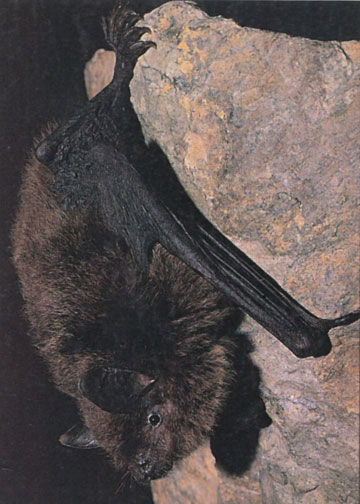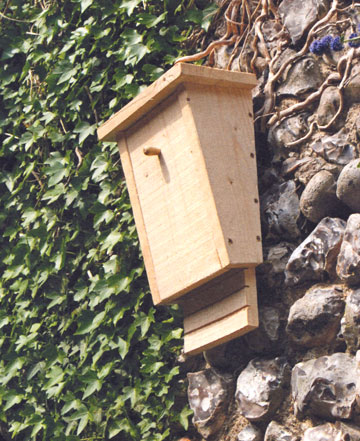Going batty!
Bats in the belfry? No, I had bats in the bathroom. I came home after work, went to close the shutters and down between the double-hung window panes I found the cutest micro-bat sound asleep. It was the size of my palm, with a soft black shiny coat and wings. After the initial ‘gee how cute’ stage I started thinking – ‘oh my goodness, these are dangerous and lethal and how do I get this thing out of my house?’
Not sure what to do, I left it alone and the next morning it was gone. I have to say I was relieved. I went to work and told my story – my dear colleagues started sharing their horror stories of bats in the roof and flying bats in their lounge rooms. Oh! I shuddered but feeling OK because the wee bat had gone, I headed for home.
Needless to say I couldn’t help myself, so I checked out the bathroom on first arrival and found that the bat had liked my bathroom so much he’d bought a friend. Now I had two bats! Being the calm person that I am … I completely panicked. Bat plague!
I rang the folks at the local wildlife rescue service who advised me to leave it alone and assured me that if I left the window open, waited for it to leave, and then closed the window, all would be fine. It was and they haven’t come back.
The thing is that bats do really suffer from a bad press. Our general ignorance of these fascinating creatures and of the big differences in the feeding habits of macro and micro-bats means we miss out on the benefits of sharing our organic gardens and farms with micro-bats.

Large-footed Myotis: This image from the book Wildlife of Greater Brisbane, which we can’t recommend highly enough if you would like to learn to recognise all manner of beasties that live in south east Queensland
There are approximately 63 species of micro-bats or insectivorous bats in Australia, 35 of which are threatened species. Micro-bats are very small animals; the largest species only grow to a length of approximately 11 cm and range in weight from 3g to 150g when fully grown. Micro-bats are nocturnal creatures and can often be seen at dusk flickering around busily.
The micro-bat can eat about a third of its own body weight in insects every night and in many parts of the world organic farmers install bat boxes throughout their farms to encourage this natural form of pest control. So why not build or install some in your backyard? I’ve mentioned this book before but it really is filled with great ideas: Bird, Bee And Bug Houses – Simple Projects For Your Garden by Derek Jones.
Micro-bats are capable of catching up to 500 insects per hour, an average of one every seven seconds. Under controlled conditions a Myotis bat (a small insectivorous bat that lives near waterways) has been recorded capturing 1200 tiny fruit flies in one hour – or one every three seconds. Micro-bats are voracious predators of mosquitoes. Bat boxes are an environmentally responsible answer to the spread of dangerous mosquito-borne diseases such as Ross River virus, dengue fever and Japanese encephalitis.
Micro-bats remain airborne for hours at a time. To catch insects that are not flying, some bats use a special technique called ‘gleaning’ to pluck insects off leaves or the ground. Some bats will perch on branches or on the ground and listen for the sounds of moving insects before attacking. Many of the micro-bats will change roost sites daily within their home range and so need a range of roost sites available. As old hollow habitat trees have disappeared from the environment, the risk of extinction for micro-bats has increased. In many areas they have disappeared altogether.
With such an abundance of species in south east Queensland it is not uncommon to find an injured bat. Power-lines, windows or barbed wire fences all cause injuries. If you find a sick, injured or orphaned bat, do not touch it. Contact your local wildlife care organisation for advice. (In southern Queensland, call the EPA / QPWS hotline on 1300 130 372).
***
Now that we have a few blog posts under our belt, we are moving to a new publication schedule. Posts will go up once a week, every Wednesday morning. Please feel free to let us know what you think about the ideal frequency of posts in the comments.
Posted in Sustainability




Very interesting – bats are very cute and wow how useful are they and such an important part of the ecosystem. Never heard of “gleaning” before – maybe we humans are just copying bats when we started “planking”.
Informative and humorous; a rare combo!
[…] me back to the importance of providing habitats for animals to shelter and live. See my post on Going batty!. It’s often simple things that we can do that can make a difference, like providing nesting […]